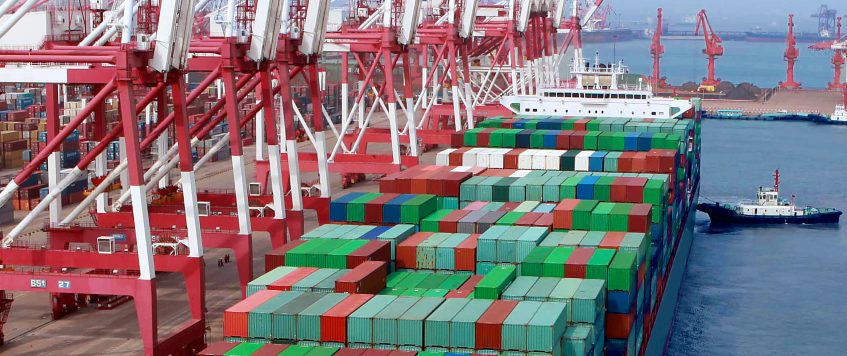-
21
May
U.S.-bound shipments see April gains but concerns remain
April shipments—at 1,126,970—saw a 13% annual increase, well ahead of March’s -10% reading, and on a year-to-date basis through March, U.S.-bound shipments—at 3,836,078—were off 1.6% compared to the same period a year ago, an improvement over the -6.8% year-to-date drop through March. Even though there was clear improvement in April shipments, Panjiva reported containerized shipments lagged, down 5.1% annually in April to 2,243,208 TEU (Twenty-Foot Equivalent Units) and down 5.2% year-to-date through April, to 8,715,993.
While United States-bound waterborne shipment volume took a major hit in March, due to the COVID-19 pandemic, according to data from global trade intelligence firm Panjiva, April, in terms of numbers, was not nearly as bad, but that comes with a few caveats.April shipments—at 1,126,970—saw a 13% annual increase, well ahead of March’s -10% reading, and on a year-to-date basis through March, U.S.-bound shipments—at 3,836,078—were off 1.6% compared to the same period a year ago, an improvement over the -6.8% year-to-date drop through March.
Even though there was clear improvement in April shipments, Panjiva reported containerized shipments lagged, down 5.1% annually in April to 2,243,208 TEU (Twenty-Foot Equivalent Units) and down 5.2% year-to-date through April, to 8,715,993.
Panjiva explained that the growth spread between U.S.-bound waterborne shipments and TEU volumes was due a 343% surge in less-than-container (LCL) shipments coming out of China in April. The firm attributed this to cargo owners having to bring in smaller-than-usual loads due to a slow recovering in manufacturing linked to COVID-19. What’s more, it added that other cargo owners will be managing reduced sales opportunities in the U.S. while also meeting drop-shipping e-commerce. When removing LCL shipments, Panjiva said that Chinese containerized freight exports fell 7.7%.
As for other countries, Panjiva noted that shipments out of Vietnam to the U.S. rose 27.7% in April, with South Korea up 16.1%, and Singapore up 18%. And the firm said that this trio saw gains, as they were able to maintain industrial production amid COVID-19. Shipments out of the EU were up 1.9%, which Panjiva termed “remarkable,” in light of the myriad industrial shutdowns there.
U.S.-bound commodity shipment levels were down, reported Panjiva, with apparel seeing the sharpest decline, down 23.8%, its fourth straight double-digit decline, and furniture imports fell 5.4%. Iron and steel imports were down 8.1%, and electronics were off 3.6%, with electronics seeing its slowest rate of decline going back to the beginning of the eight month-long tariff-drive slowdown, Panjiva said.
“The punch line with this is that the [import] data for April is maybe not as bad as what was expected,” said Chris Rogers, Panjiva research director, in an interview. “That is not necessarily a good thing though, as that may mean the worst is yet to come. April’s data is a good reminder that the logistics industry is highly dynamic, and situations change from week-to-week and month-to-month, even though they may be long-term trends.”
Looking at how U.S.-bound shipments were up 13% in April, Rogers said that number is “greatly flattered” by the surge in LCL shipments coming into the U.S. from China and was effectively driven by a mixture of an increase in e-commerce and drop-ship flows, as well as some Chinese factories coming back online not being fully re-opened and only have partial output of an initial getting things moving even if there is not a complete container ready for transport, which is likened to expedited shipping in that regard.
Even though U.S.-bound containerized shipments were down 5.1% in April, Rogers said that in a typical environment that would be a bad number but in the context of what container lines and ports have been discussing, it is easier to accept, as those concerns have been pointing to potential 20%-to-30% declines in the second quarter.
“Orders for May and June are getting cancelled and the trade flows are going to dry up,” he said. Due to such a flutter in April, what we may see in May and June data is a drop in shipments, due to cancelled orders, store closures and industrial closures. Companies like Maersk, Hapag Lloyd, and Matson have said they are looking at second quarter volume reductions in the 20%-to-25% range, which could be a bit of a horror story.”
When asked about prospects for the second half of 2020, Rogers said it all depends on consumer confidence.
“If people are happy to get out and go shopping, then the retailers will be shipping and the manufacturers will be making, and there will be a good holiday season,” he said. “But if there is any sign that consumer confidence is not there, and bear in mind that tens of millions of Americans have lost their jobs, there is not a lot of pent-up buying pressure at the moment. People may not be spending on vacations but they are spending on things like computer keyboards or a bag of flour. And, at the same time, there are still goods arriving, and retailers will have stockpiles of goods and will do things like have sales to shift their inventory. That may put a lid on the recovery for the second half of the year, as well as indicate that consumer confidence is reduced, too.”

